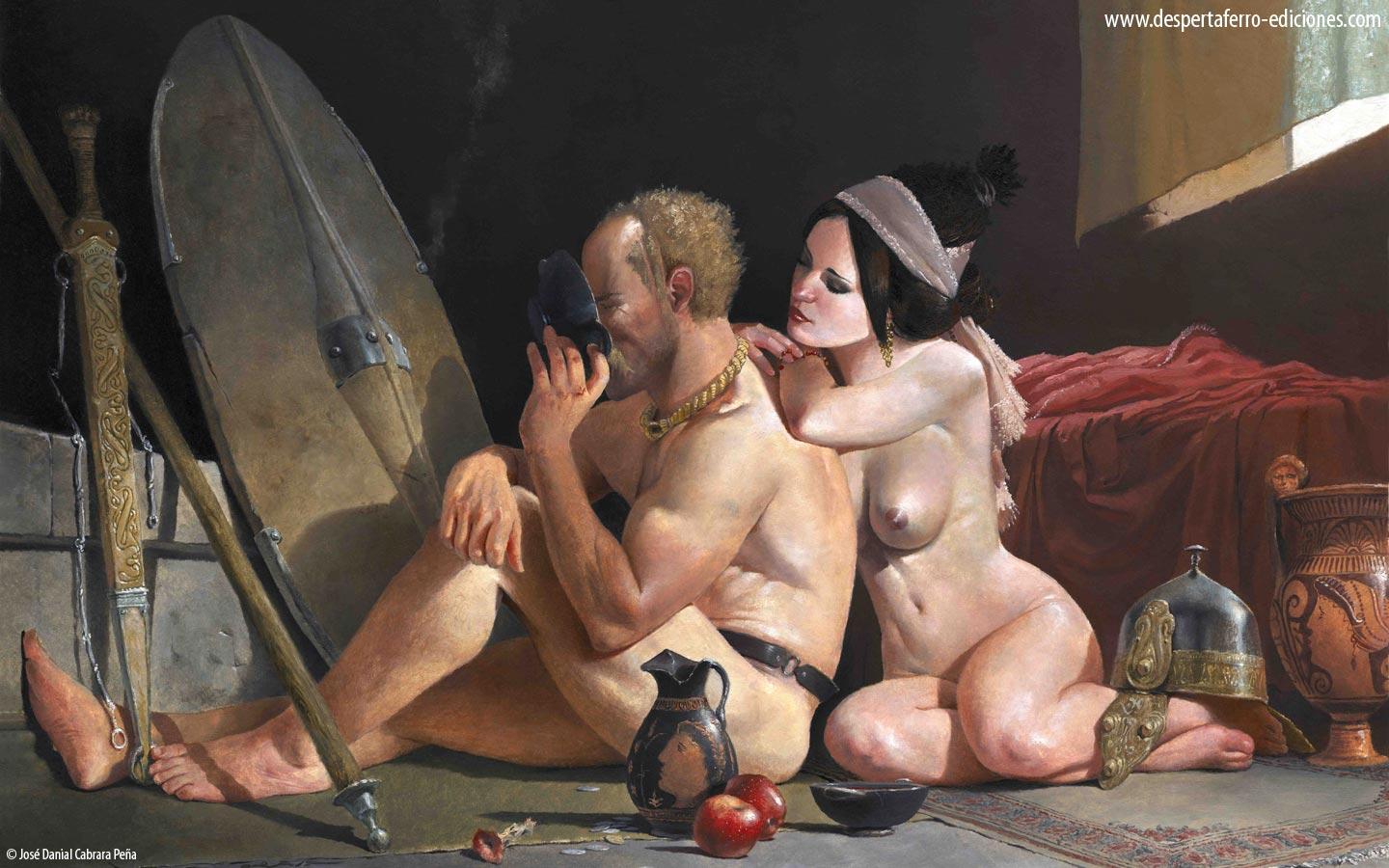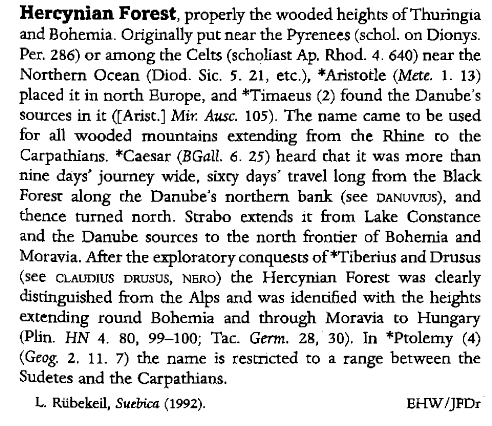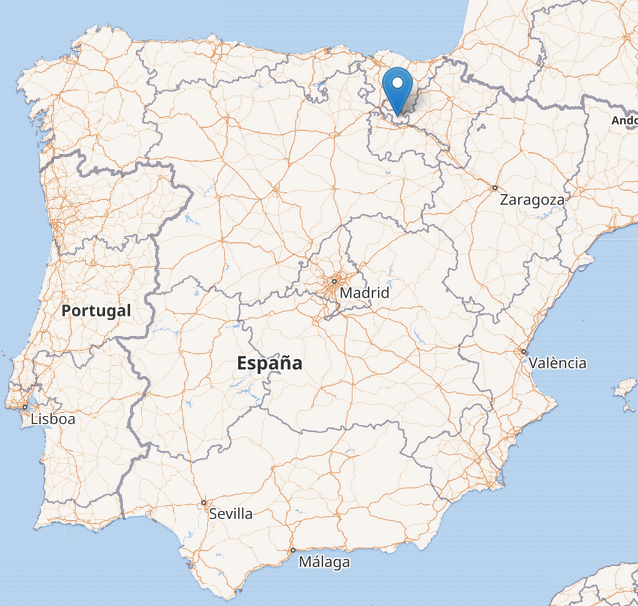-
Posts
2.379 -
Joined
-
Last visited
-
Days Won
80
Everything posted by Genava55
-
I doubt those words are really attested, they seem to be reconstructions. Othrus is attested in Old Irish laws but I don't see tech othrais. I really have the feeling it is modern. Edit: I checked again and the oldest possible case I see is Teach Duinn in Lebor Gabála Érenn, but it is hard to say if it is figurative, literal or a borrowing from Hebrew (where the concept of 'house of God' is very strong, especially in the case of Lebor Gabála Érenn it is dubious since this source is clearly forcing the use of foreign words into Irish myths). *sedo- is given by Delamarre, Lambert and Koch. I don't see how tumulus or peace would fit in the previous examples. I have checked the etymology of Sedunum which is the ancient name of a well known town in Switzerland and various sources gave sed- as "seat" / "seated" That's the thing. Oikos is logically the equivalent in Greek because it is related to a wide concept of home, household and property. And I don't think it can be used either as an equivalent of "house of" like in English (house of the lords, house of the commons, etc. etc.). Although maybe it is the case in Irish with Teach/Tech, I am skeptical. I don't see this trend in ancient toponyms of France, Switzerland and Belgium. If teg- had been used in such a way, I would expect to see it everywhere. Like house in Old English and other Germanic languages (Hüsem/Husum in Germany, Etainhus and Sahurs in Normandy, Huizum in Netherlands etc.)
- 264 replies
-
- 1
-

-
- britons
- east celtic
-
(and 2 more)
Tagged with:
-
It was before forum update. It seems to be a lost feature.
- 264 replies
-
- britons
- east celtic
-
(and 2 more)
Tagged with:
-
@jorellaf Oh thank you very much for your useful insights and suggestions. I really appreciate. That's exactly what I follow. I rely on Xavier Delamarre dictionary. Delamarre is mostly doing the same than Jaones. Obviously there should be some difference between ancient British/Brytonic and Gaulish, but the former is lesser known so relying on Gaulish is good enough. If we can know the difference, it is interesting to put forward. If not, Gaulish is acceptable. Tig- or teg- seem to be both attested, notably in Tigorix, Ciuotegetis and Tegonius. Delamarre suggests tegia because there are several old toponyms based on this root (Attegia, Ategiola, Adteia) and the surviving teza/tedza in some North-Italian dialects. Although it could be a general deformation due to Latin. He did mention *tegos- for the Insular languages. For me, your suggestion tegos is fine. Old Irish less 'courtyard', Welsh llys 'court, courtyard, palace', old Breton lis and middle Breton les for 'court, courtyard'. In Belgium, Lestines>Estines from a possible Listinas. It seems to designate a place of power. Well I am not very fond of Tigernotreba either. I made up this word because I wanted to differentiate the Britons from the Gauls on a few buildings. Tigern- is more common in the British Isles, I started from this, that's why. So your idea has my preference. Cridio(n)towtâs is interesting and catchy. Praesidium is basically a military outpost. In Latin, we have castrum, but the etymology is quite complex and difficult to mimic for a Celtic language. The word barrack comes from Old French and Old Spanish, barraca. Probably from barrum, clay/mud. Not useful in our case. So I found praesidium as an interesting case where the concept of seat is used in a military context for a building. Anyway the concept of "barracks" doesn't exist in ancient Celtic societies. This is a constraint from the gameplay, not from the historical evidences. I really dislike anything with 'house of' because this is inheriting a concept from English and other Germanic languages where the house is a wide and flexible concept. I am not sure that the Greek language is using the word στέγω (stégō) the same way English is using the word house. While Coriossedens(es) is attested by an inscription found in Gard (France) related to a people and coriiosed- is attested on Lezoux plate. The rotary mill has been removed because it is not historical accurate. There is indeed a manual rotary mill found in Gallic context, but the oldest evidences are suggesting North-Eastern Iberian context as the origin.
- 264 replies
-
- 1
-

-
- britons
- east celtic
-
(and 2 more)
Tagged with:
-
.thumb.jpg.b21ca1d0c15fb56b42c39b25a0a40815.jpg)
Bibliography and references about ancient times (+ book reviews)
Genava55 replied to Genava55's topic in General Discussion
Well the thread is simply an opportunity to exchange references, to share book reviews or to ask other members if they know any reference on a topic. While being also a useful list for everyone. Thus, very general. -
Well I am trying to introduce Gaulish instead of the modern Celtic language in the name of the units and of the buildings. I have a dictionary for Gaulish, but obviously some words needed for the buildings are not attested so I made-up some words with different roots. I am not confident with Indo-European grammar, so this is why I asked.
-
.thumb.jpg.b21ca1d0c15fb56b42c39b25a0a40815.jpg)
Bibliography and references about ancient times (+ book reviews)
Genava55 replied to Genava55's topic in General Discussion
@Nescio I have seen this book recommended by other people: "War, Warlords, and Interstate Relations in the Ancient Mediterranean". The book is in libgen in case. Just in case you are interested, I share it with you. -
Hi, welcome aboard. I am currently participating in Europa Barbarorum II mod and a bit in Crossing the Rubicon (Bannerlord) mostly for Celtic archaeology. What are your skill with language and more particularly Celtic language? Personally I am not contributing to the models and the scripts here. I am not enough familiar with javascript, I am mostly working with python and SQL for GIS and other spatial databases. And learning java and javascript do not fit in my schedule for the moment.
-
.thumb.jpg.b21ca1d0c15fb56b42c39b25a0a40815.jpg)
Others RTS - Discuss / Analysis
Genava55 replied to Lion.Kanzen's topic in Introductions & Off-Topic Discussion
darn it is looking cool -
.thumb.jpg.b21ca1d0c15fb56b42c39b25a0a40815.jpg)
A "psychic" shader mod; development begins...
Genava55 replied to DanW58's topic in Applications and Contributions
I know it is not only this example, but I still want to say I am sorry for your Gallic tavern, I really like the model though. -
.thumb.jpg.b21ca1d0c15fb56b42c39b25a0a40815.jpg)
A "psychic" shader mod; development begins...
Genava55 replied to DanW58's topic in Applications and Contributions
Personally I found your insights interesting. The only thing is that it is really different from what is done currently, from a visual perspective. So it has huge impacts. This is why other people are prudent and skeptical. I am absolutely not competent to give any opinion on this matter, but I really like the final render of your shader. As Nescio said, try to argue differently and to explain your point of view. I understand your frustration but going in a personal and political argument is not helping you. -
.thumb.jpg.b21ca1d0c15fb56b42c39b25a0a40815.jpg)
Hello, I'm new here, asking some things
Genava55 replied to Anamuraalententa's topic in General Discussion
Welcome! Many Roman factions? I think you are confusing the Hellenistic factions with the only Roman faction in the game. There are two Greek cities as factions: Sparta and Athens. There are three Hellenistic kingdoms related to the conquest of Alexander the Great: the Macedonian Kingdom (i.e. the homeland of Alexander), the Ptolemaic Kingdom (Egypt under the rule of a Hellenistic dynasty) and the Seleucid Empire (Persia and Anatolia under the rule of a Hellenistic dynasty). The two Hellenistic dynasties in Egypt and Persia are due to the break-up of the Macedonian Empire following Alexander's death. I suggest you to check wikipedia's article about the Diadochi (aka the successors): https://en.wikipedia.org/wiki/Diadochi -
.thumb.jpg.b21ca1d0c15fb56b42c39b25a0a40815.jpg)
Others RTS - Discuss / Analysis
Genava55 replied to Lion.Kanzen's topic in Introductions & Off-Topic Discussion
-
Like AoE2 telling you which unit counter what? Personally I am not against your proposal, but the game doesn't include at the moment any visual changes for blacksmith upgrades for example. ----------- Maybe the compromise should be a stat visualizer option enabled only for debugging and testing, something modders could activate. I really want to stress the necessity to keep flexibility for the future and people could have different needs.
-
If I said it is against open source philosophy, this is because of testing and modding. It further complicates everything.
-
Not very compatible with open source philosophy. Transparency is better.
-
Bunch of pictures https://www.facebook.com/permalink.php?story_fbid=238497414509891&id=105786014447699 https://www.facebook.com/permalink.php?story_fbid=186734969686136&id=105786014447699
- 264 replies
-
- 1
-

-
- britons
- east celtic
-
(and 2 more)
Tagged with:
-
.thumb.jpg.b21ca1d0c15fb56b42c39b25a0a40815.jpg)
Ardennes Forest -> Hercynian Forest
Genava55 replied to wowgetoffyourcellphone's topic in Gameplay Discussion
-
.thumb.jpg.b21ca1d0c15fb56b42c39b25a0a40815.jpg)
Age of Empires 2 Definitive Edition
Genava55 replied to Lion.Kanzen's topic in Introductions & Off-Topic Discussion
Interesting for balance -
.thumb.jpg.b21ca1d0c15fb56b42c39b25a0a40815.jpg)
Bibliography and references about ancient times (+ book reviews)
Genava55 replied to Genava55's topic in General Discussion
Big thanks to Fernando Quesada-Sanz for sharing this thesis on the Iberian armament, volume 2 should be uploaded soon: https://www.academia.edu/44920313/QUESADA_SANZ_F_1997_El_armamento_ibérico_Estudio_tipológico_geográfico_funcional_social_y_simbólico_de_las_armas_en_la_Cultura_Ibérica_siglos_VI_I_a_C_Monographies_Instrumentum_3_Montagnac_Ed_Monique_Mergoil @Duileoga @soloooy0 @av93 -
.thumb.jpg.b21ca1d0c15fb56b42c39b25a0a40815.jpg)
===[COMMITTED]=== Iberian Wonder: Cancho Roano
Genava55 replied to LordGood's topic in Completed Art Tasks
It depends on the definition and scope of the Iberian faction. At some point it must be decided what it should portray and what it shouldn't. -
Obviously the Chineses are not coming with this release, so... Personally I liked Xylon ; Xšayaṛša ; Xulsigiae
-
The brutal massacre of the Iberian town of La Hoya https://historia.nationalgeographic.com.es/a/brutal-masacre-poblado-iberico-hoya_15725 https://translate.google.com/translate?hl=&sl=es&tl=en&u=https%3A%2F%2Fhistoria.nationalgeographic.com.es%2Fa%2Fbrutal-masacre-poblado-iberico-hoya_15725&sandbox=1 A study carried out by Spanish and British researchers on the discovered human remains of the inhabitants of this Iberian site located in Álava sheds new light on how they died: brutally murdered. An atrocious attack on an Iron Age city in northern Spain in the mid-4th or late 3rd century BC left more than a dozen corpses of men, women, and children strewn in the streets as the city burned. The injuries inflicted on the people who died there were horrible. One individual was beheaded, two had their arms severed and nearly half of the remains showed signs of mutilation, archaeologists studying the area have recently discovered. Now, a new study of the victims' bones, the first detailed investigation of their injuries, led by researcher Teresa Fernández-Crespo, of the University of Oxford, and published by the journal Antiquity, suggests they were killed by a neighboring community during a calculated takeover or act of revenge. https://en.wikipedia.org/wiki/La_Hoya,_Alava
-
Be aware that Divide et Impera mod is not really accurate on several aspects so stay critical.




